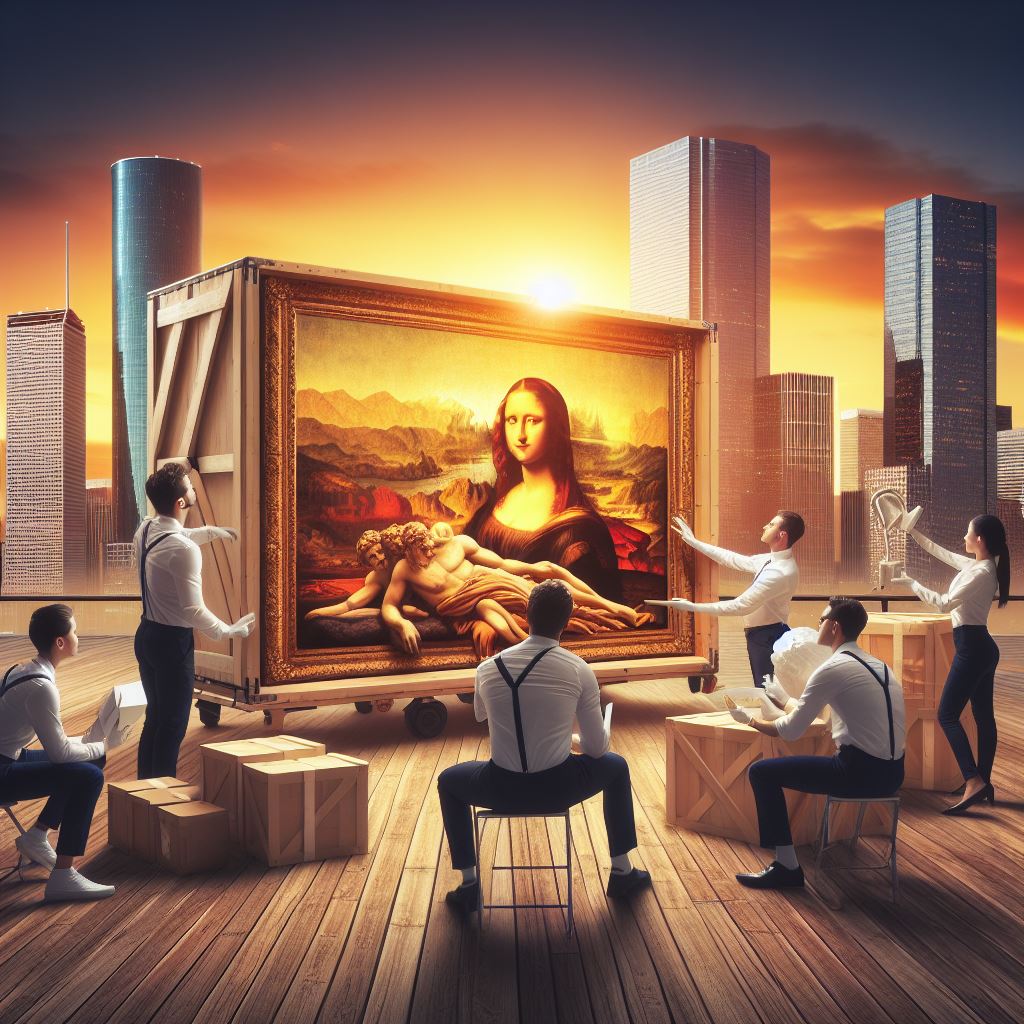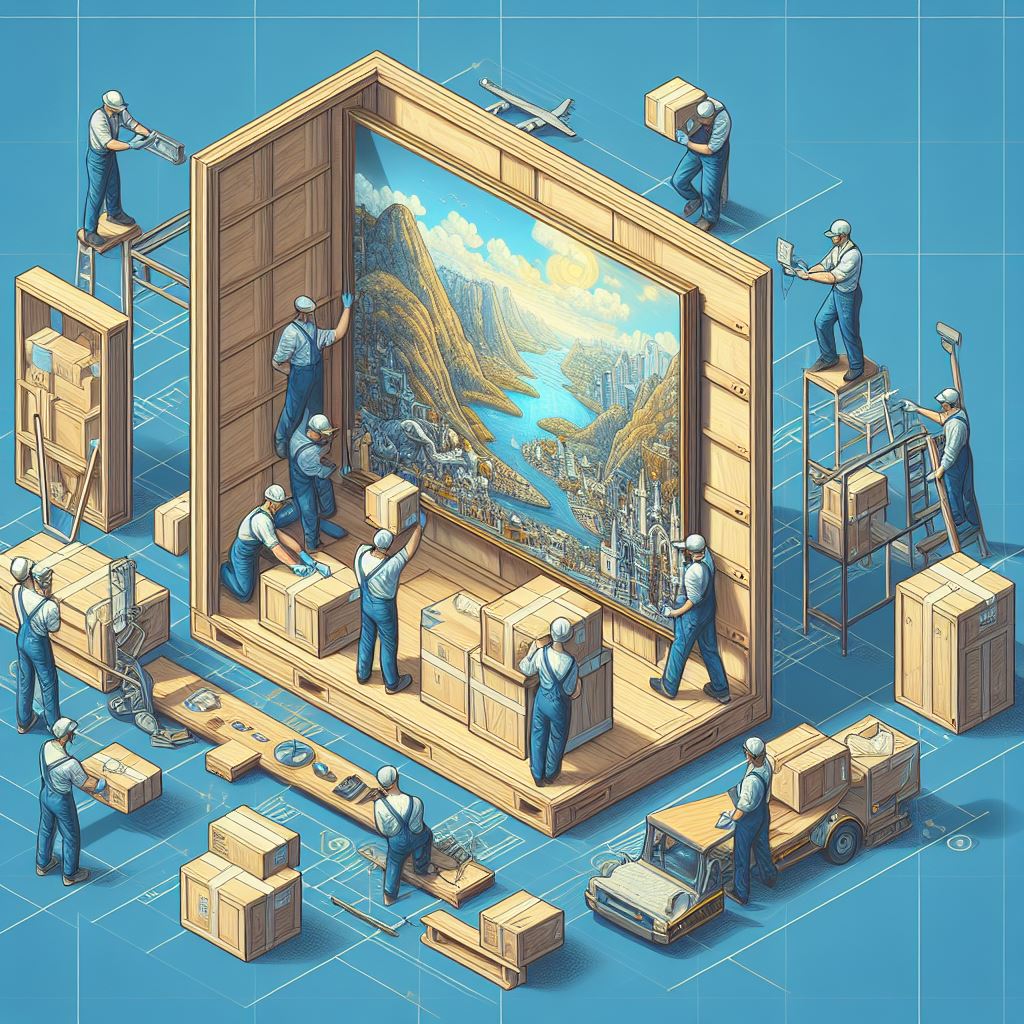Art Installation Explained: A Simple Guide
Art installation is a fascinating yet often misunderstood aspect of the art world. Whether it’s a grand sculpture in a public park or a delicate painting in a corporate office, the process of installing art is meticulous and requires a keen understanding of both the art piece and the environment it will inhabit. At its core, art installation is about presenting artwork in a way that is both safe and visually appealing.
When discussing art installation explained, it’s important to note the various elements that contribute to a successful installation. These elements include understanding the structural integrity of the artwork, selecting the appropriate mounting hardware, and ensuring that the piece is displayed at the optimal height and angle for viewing. Additionally, factors such as lighting, climate control, and security measures are crucial considerations, especially for valuable or fragile pieces.
Need Help With Your Corporate Art Installation? If so, TyArt is here to help. For years, we’ve been helping homeowners, businesses, museums, and more ensure that their eye-catching art installations are safely and successfully put up. This means we’re familiar with the importance of careful handling, as well as the impact these installations can have. We have installed Corporate Art in the Houston area for over 21 years. If you have any questions about art services in Houston, please don’t hesitate to reach out to us today. We can be reached by calling 713.869.4044 or visiting our website.
Understanding Different Art Installations

When it comes to art installation, one size definitely does not fit all. There are various types of art installations, each requiring a unique approach and set of skills. Understanding these differences is crucial for ensuring that the artwork is displayed in the most effective and secure manner possible.
Wall-mounted installations are perhaps the most common and include paintings, photographs, and other flat artworks. These installations require precise measurements and the right mounting hardware to ensure that the piece is level and secure. The type of wall and its material—whether drywall, brick, or plaster—also dictate the method of installation.
Freestanding sculptures offer a different set of challenges. These pieces often need to be anchored to the floor or placed on a stable base to prevent tipping. The weight and balance of the sculpture must be carefully considered, along with the material of the floor to ensure stability and safety.
Suspended installations, such as mobiles or hanging sculptures, require meticulous planning and engineering. The ceiling’s structural integrity must be evaluated to support the weight, and the suspension system must be designed to distribute that weight evenly. This type of installation often involves collaboration with engineers and architects to ensure safety and durability.
Site-specific installations are artworks designed for a particular location. These can range from large-scale outdoor sculptures to interactive installations within a gallery. For these projects, understanding the environmental conditions, such as weather and lighting, is crucial for maintaining the artwork’s integrity and appearance over time.
By comprehending the nuances of different art installations, one can appreciate the complexity and artistry involved in presenting artwork in its best possible form. This understanding not only enhances the visual experience but also ensures the longevity and safety of the art pieces.
Preparing for an Art Installation

Preparing for an art installation is a meticulous process that requires careful planning and attention to detail. Proper preparation ensures that the installation goes smoothly and that the artwork is displayed to its fullest potential. Here are some key steps to consider:
Assess the Space: Before beginning any installation, it’s crucial to thoroughly assess the space where the artwork will be displayed. This includes measuring dimensions, understanding the lighting conditions, and evaluating the structural integrity of walls, floors, or ceilings. This assessment helps determine the best placement and method of installation for each piece.
Gather Necessary Tools and Materials: Having the right tools and materials on hand is essential for a successful installation. This may include measuring tapes, levels, drills, screws, anchors, and specialized mounting hardware. For more complex installations, additional equipment like scaffolding or lifts may be required.
Plan the Layout: A well-thought-out layout is key to a cohesive and visually appealing installation. This involves deciding on the placement of each piece, considering factors such as sightlines, flow of movement within the space, and the relationship between different artworks. Creating a scaled mock-up or utilizing digital planning tools can be incredibly helpful in this stage.
Ensure Artwork Safety: Protecting the artwork during installation is paramount. This includes using appropriate gloves to handle pieces, applying protective padding or coverings, and ensuring that the installation environment is clean and free from potential hazards. For delicate or valuable pieces, additional precautions such as climate control or security measures may be necessary.
Collaborate with Professionals: Depending on the complexity of the installation, it may be beneficial to collaborate with professionals such as art handlers, conservators, or engineers. Their expertise can provide valuable insights and ensure that the installation adheres to best practices and safety standards.
By following these steps, you can create a well-organized and efficient process for preparing an art installation. This not only enhances the overall quality of the display but also safeguards the artwork and the installation team.
Tools and Materials Needed

Having the right tools and materials is essential for a successful art installation. A well-prepared toolkit can streamline the process and ensure that each piece is securely and beautifully displayed. Here are some of the key tools and materials you will need:
Measuring Tools: Accurate measurements are crucial for a precise installation. Ensure you have a quality measuring tape and a laser level. These tools help in marking the exact positions for hanging and ensure that artworks are level and proportionately spaced.
Mounting Hardware: The type of hardware you need will vary depending on the weight and size of the artwork. Common items include screws, nails, wall anchors, and specialty hooks. Heavy-duty brackets may be necessary for larger pieces. For sculptures or three-dimensional works, you might need pedestals, stands, or custom mounts.
Drills and Screwdrivers: A reliable drill and a set of screwdrivers are fundamental for securing mounting hardware. Cordless drills can offer flexibility and ease, especially in tight or awkward spaces. Ensure you have a variety of drill bits and screwdriver heads to accommodate different types of hardware.
Protective Gear: Protecting both the artwork and the installers is crucial. Use gloves to handle artworks to prevent oils and dirt from transferring to the pieces. Safety glasses, dust masks, and sturdy footwear can protect installers during the physical aspects of the job.
Padding and Covers: To safeguard the artwork during the installation process, use padding and protective covers. This includes bubble wrap, soft blankets, and foam sheets. These materials can prevent scratches, dents, and other damages.
Hanging Aids: For more complex installations, additional aids like picture hanging systems, wire, and D-rings can be invaluable. These tools help in achieving the desired positioning and ensuring that the artwork is securely mounted.
Cleaning Supplies: Before and after installation, it’s important to clean both the artwork and the installation area. Use microfiber cloths, gentle cleaners, and dusters to keep everything in pristine condition. Ensure that the products used are safe for the specific types of artwork.
By assembling these tools and materials, you can approach your art installation with confidence and efficiency. Proper preparation and the right equipment not only simplify the process but also ensure that the artwork is displayed in the best possible manner, enhancing its visual impact and longevity.
Step-by-Step Art Installation Process

Installing art may seem daunting, but breaking it down into manageable steps can make the process smoother and more efficient. Here’s a step-by-step guide to help you through your art installation project:
- Preparation: Begin by assessing the space where the artwork will be installed. Take measurements of the wall and the artwork itself. This will help you determine the best placement and ensure proper spacing. Gather all necessary tools and materials, and make sure the area is clean and free of obstructions.
- Planning the Layout: Use painter’s tape or paper templates to map out the placement of each piece on the wall. This visual guide will help you adjust the layout before making any permanent marks. Ensure the arrangement is visually balanced and cohesive with the overall design of the space.
- Marking the Wall: Once you are satisfied with the layout, use a pencil to lightly mark the positions for the mounting hardware. Double-check your measurements to ensure accuracy. Use a level to make sure everything is aligned correctly.
- Installing the Hardware: Depending on the type of wall and the weight of the artwork, select the appropriate mounting hardware. Drill pilot holes if necessary, and securely install the screws, anchors, or hooks. Make sure each piece of hardware is level and firmly attached.
- Hanging the Artwork: With the hardware in place, carefully hang the artwork. For larger or heavier pieces, it may be helpful to have an extra set of hands. Use a level to ensure the artwork is straight, and make any necessary adjustments.
- Final Adjustments: Step back and assess the installation from different angles. Make any final tweaks to ensure the artwork is perfectly positioned. Check for stability and security to ensure the pieces are safely mounted.
- Cleaning Up: Once the installation is complete, clean up any dust or debris from the area. Use a microfiber cloth to gently wipe down the artwork and remove any fingerprints or smudges.
Following these steps will help ensure a successful and professional-looking art installation. Taking the time to plan and execute each stage carefully will result in a visually stunning and secure display of your artwork.
Common Challenges and Solutions
Even with meticulous planning, art installation projects can encounter a variety of challenges. Being aware of these common issues and knowing how to address them can save time and prevent frustration.
- Weight and Stability: One of the most frequent challenges is ensuring the artwork is securely mounted, especially for heavy pieces. Use appropriate mounting hardware and consider wall anchors or studs for added stability. For extremely heavy items, professional assistance may be required.
- Wall Material: Different wall materials, such as drywall, plaster, brick, or concrete, require different mounting techniques. Ensure you have the right tools and hardware for the specific wall type to avoid damage and ensure a secure installation.
- Alignment and Leveling: Getting artwork perfectly level can be tricky. Use a spirit level and a measuring tape to ensure accurate placement. Laser levels can also be helpful for aligning multiple pieces.
- Lighting: Improper lighting can detract from the artwork’s visual impact. Consider the direction and intensity of natural and artificial light sources. Adjustable lighting fixtures can help you highlight the artwork effectively.
- Environmental Factors: Temperature, humidity, and exposure to direct sunlight can affect the longevity of your artwork. Use climate control measures and UV-protective glass or acrylic to preserve your pieces.
- Spacing and Layout: Ensuring a cohesive and balanced layout can be challenging, especially with multiple pieces. Use templates and mock-ups to visualize the arrangement before making permanent marks on the wall.
Addressing these common challenges with thoughtful solutions can ensure a smooth and successful art installation process. By being prepared and proactive, you can create an impressive and secure display that enhances the aesthetic of any space.
Need Help With Your Corporate Art Installation? If so, TyArt is here to help. For years, we’ve been helping homeowners, businesses, museums, and more ensure that their eye-catching art installations are safely and successfully put up. This means we’re familiar with the importance of careful handling, as well as the impact these installations can have. We have installed Corporate Art in the Houston area for over 21 years. If you have any questions about art services in Houston, please don’t hesitate to reach out to us today. We can be reached by calling 713.869.4044.



